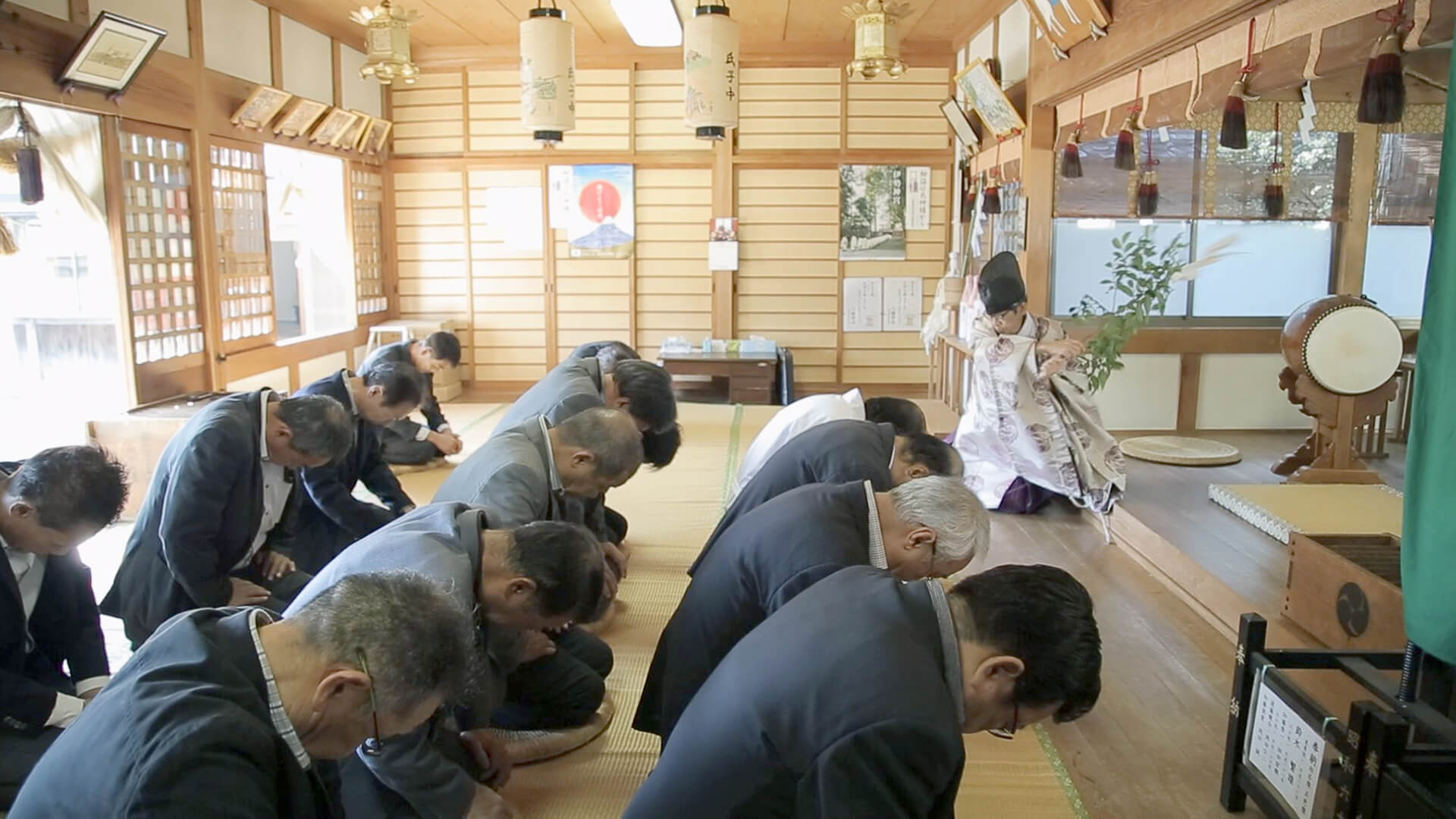




The god of Hachiman Shrine is Ohosazaki no Mikoto. The shrine enshrines Hondawake no Mikoto and Tagitsuhime no Mikoto. Upon receiving approval on April 11, 1908, Hachiman Shrine was enshrined together with Okabuto Shrine. On October 14 in 1927, after obtaining a consensus from parishioners and completing the arrangements of shrine buildings, the shrine was merged again into its former site and became an unofficial shrine. On March 5, 1951, it was certified and registered as a shrine belonging to Association of Shinto Shrines per the Religious Corporations Ordinance.
Held on the second Sunday of October.
This is the biggest festival of the year and is celebrated by all the local parishioners. The Yunohana rites are performed at the Autumn Festival, Spring Festival, Kinen-sai, and Niiname-sai. In the Yunohana rite, a priest encloses a hearth with sacred ropes and bamboo, boils water in iron pot and offers it to the god, while the Yunohana-uji parishioner soaks bamboo grass in the boiling water and purifies himself. Next, the parishioner sprinkles hot water mist on worshippers with the bamboo grass two times. While being enveloped by the mist, worshippers pray for the well-being of their families, health and safety, and bountiful harvest. After that, at the Naorai party, participants share the hot water, the god’s rice wine, and round rice cakes offered to the shrine’s god and the god of mountains. Following the rites, autumn harvest vegetables and other ingredients are simmered in a large pot. An imoni party is then held for worshippers. In addition, neighborhood council events such as a parade in which children carry a portable shrine are held.
Held on the second Sunday of November.
Rice, vegetables, and fruits harvested during the year are offered to the god in appreciation for the harvest of rice and as a prayer for the following year’s bountiful harvest, the well-being of families, and health and safety. Also, similar to the Spring Festival, Autumn Festival, and Kinen-sai, the Yunohana rite is held.
Held from December 31 to January 1
Worshippers begin praying when the clock strikes midnight. These rites convey to younger generations the idea that “the first Shinto shrine visited in the New Year should be the neighborhood shrine.”
200 round rice cakes and amazake are served to worshippers in the shrine grounds, and talismans are handed out. Worshippers make a bonfire to celebrate the New Year.
Held on the second Sunday of February.
This festival celebrates a harvest in advance. People pray for a bountiful harvest, the well-being of their families, and health and safety.
Also, similar to the Spring Festival, Autumn Festival, and Niiname-sai, the Yunohana rite is held.
Held on the second Sunday of March.
Originally, the festival was a shrine ceremony held on the first day of the horse of March. Presently, it is held on the second Sunday of the month.
Parishioners who are in their unlucky years (ages 19 and 33 for women; ages 25, 42, and 61 for men in kazoedoshi (the traditional Japanese system of calculating age)) place a 2-sho quantity (approx. 3 kg) of round rice cakes on a tray, and then dedicate the cakes to the shrine together with rice and a prayer fee.
After the prayer, worshippers receive talismans of the prayer and the lower part of the round rice cakes. Worshippers divide the rice cakes into pieces and distribute them to their neighbors and relatives.
21-40 Sanjo 3-chome, Suzuka City, Mie Prefecture 513-0806 Japan